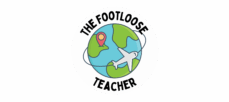Should you send your kids to an international school?

Considering sending your kids to an international school?
Or are you contemplating moving overseas and working at an international school? You might be surprised at the many different types of schools out there. International schools are becoming increasingly popular around the world as more and more families move abroad or seek a global education for their children. With the rise in demand for international schools, there has been a corresponding increase in the variety of curricula offered by these institutions. Here are some of the most commonly offered international school curricula.
Do you know your IB’s from you IGCSE’s and AP’s?
I have mainly taught in International Baccalaureate schools where I have taught Economics and Business Management at the IB Diploma level as well as the Middle Years Program. But I have also taught the IGCSE (Cambridge) in a couple of schools. There is often a debate among international educators as to which system is best. I’m Australian, but I have never taught in an Australian international school. Here is a very basic overview.
1. International Baccalaureate (IB)
The International Baccalaureate (IB) is one of the most widely recognized international school curricula. It is based on a philosophy that encourages students to become critical thinkers, inquirers, and problem solvers. The curriculum is structured around six subject groups: language and literature, language acquisition, individuals and societies, sciences, mathematics, and the arts. The IB curriculum is offered to students from the ages of 3-19 and is known for its rigor and depth. This includes 4 different programs: Primary Years Program (PYP), Middle Years Program (MYP), Diploma Program (DP) and the most recent addition, the Career-related Program (CP)
2. Cambridge International Curriculum
The Cambridge International Curriculum is a popular curriculum offered by Cambridge Assessment International Education (CAIE). This curriculum is designed for students from 5-19 years of age and provides a wide range of subjects that are tailored to the needs of each student. The curriculum is divided into four stages: Primary, Lower Secondary, Upper Secondary, and Advanced. Each stage is designed to build on the knowledge and skills developed in the previous stage, and students can earn a variety of qualifications, including the Cambridge Primary Checkpoint, Cambridge IGCSE, Cambridge International AS & A Level, and Cambridge Pre-U. As the name implies, this is a curriculum popular in British schools, though many non-British schools opt for the IGCSE program rather than the IB’s MYP.
3. American Curriculum
The American Curriculum is based on the educational system used in the United States. This curriculum is focused on building a strong foundation in core subjects such as English, mathematics, science, and social studies. Students are also required to take physical education, art, music, and foreign language classes. The American Curriculum is designed to prepare students for higher education in the United States, but it is also recognized by universities around the world. You may have heard of students who study the AP.
4. French Curriculum
The French Curriculum is based on the education system used in France. This curriculum is designed to provide students with a strong foundation in language, literature, history, mathematics, and science. The curriculum is divided into three stages: primary, lower secondary, and upper secondary. The primary stage focuses on developing basic skills, while the lower secondary stage focuses on building on these skills and introducing more complex concepts. The upper secondary stage prepares students for higher education in France. There are quite a few French, German or European schools throughout the world and they are well established in several countries where I have lived.
5. German Curriculum
The German Curriculum is based on the education system used in Germany. This curriculum is designed to provide students with a strong foundation in language, mathematics, science, and social studies. The curriculum is divided into two stages: lower secondary and upper secondary. The lower secondary stage focuses on developing basic skills, while the upper secondary stage prepares students for higher education in Germany.
6. Singapore Curriculum
The Singapore Curriculum is based on the education system used in Singapore. This curriculum is designed to provide students with a strong foundation in mathematics, science, and language. The curriculum is divided into two stages: primary and secondary. The primary stage focuses on developing basic skills, while the secondary stage prepares students for higher education in Singapore.
7. Australian Curriculum
The Australian Curriculum is based on the education system used in Australia. This curriculum is designed to provide students with a strong foundation in language, mathematics, science, and social studies. The curriculum is divided into three stages: foundation, lower primary, and upper primary. The foundation stage focuses on developing basic skills, while the lower primary stage builds on these skills and introduces more complex concepts. The upper primary stage prepares students for higher education in Australia.
In conclusion
International schools offer a wide range of curricula to meet the needs of students from all over the world.
Each curriculum has its unique approach and benefits, and it is up to parents to decide which curriculum is best suited. It is also up to prospective international teachers to make the right choice in choosing the right school with a curriculum that suits them and their educational philosophy. In some countries, there has also been an increase in the number of schools adding the name ‘international’ without really having many characteristics of international schools such as international students and teachers.
